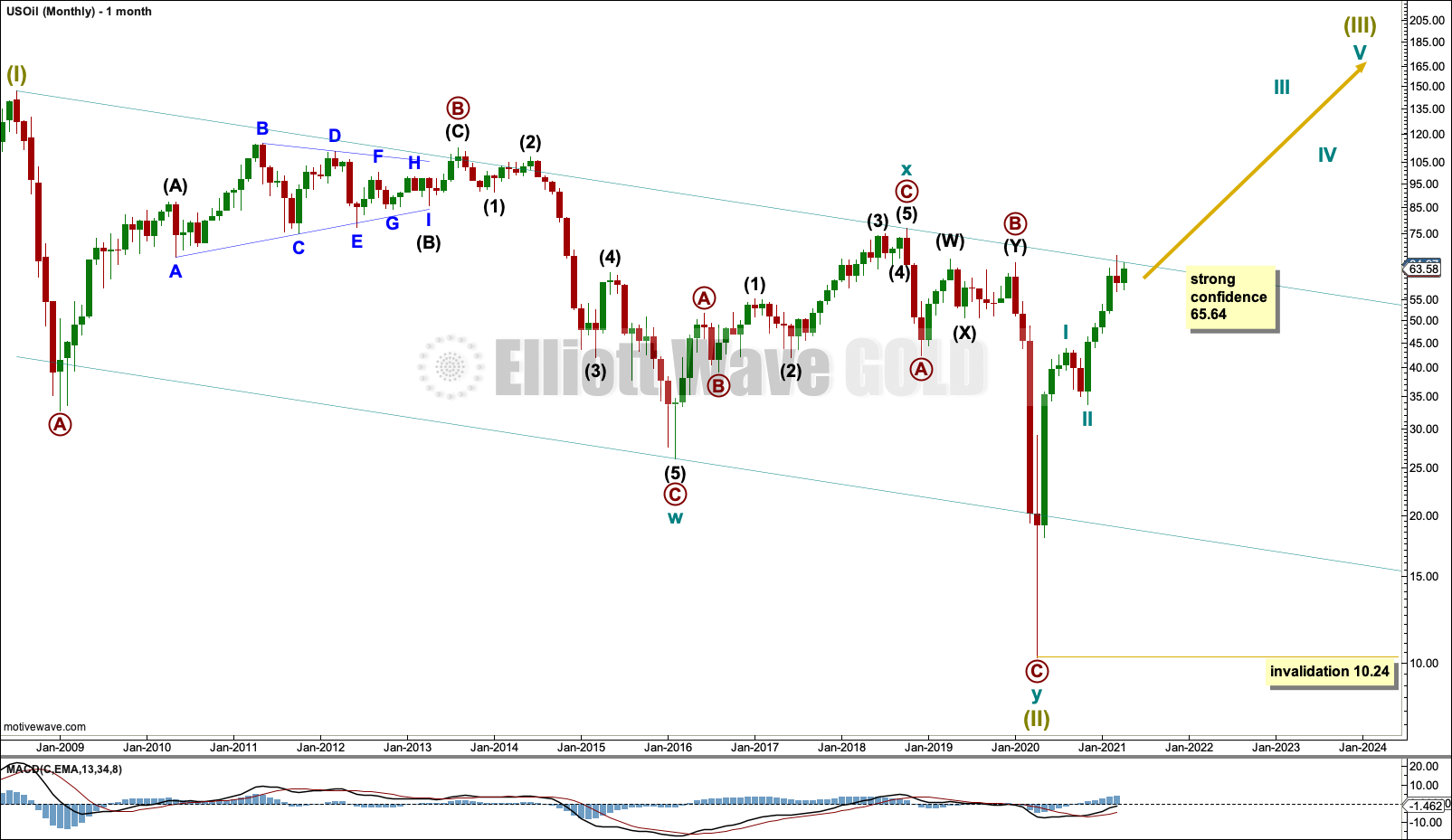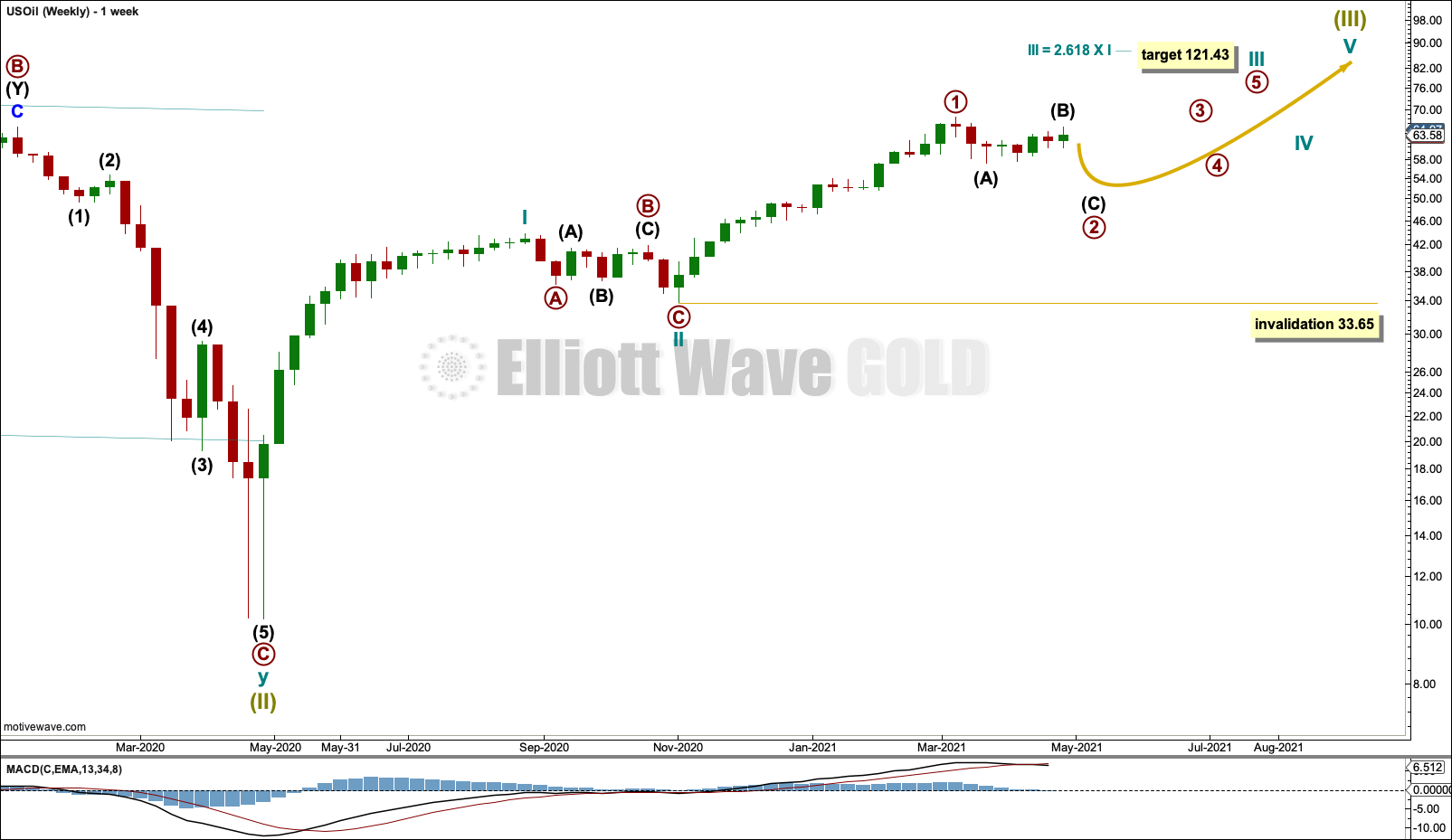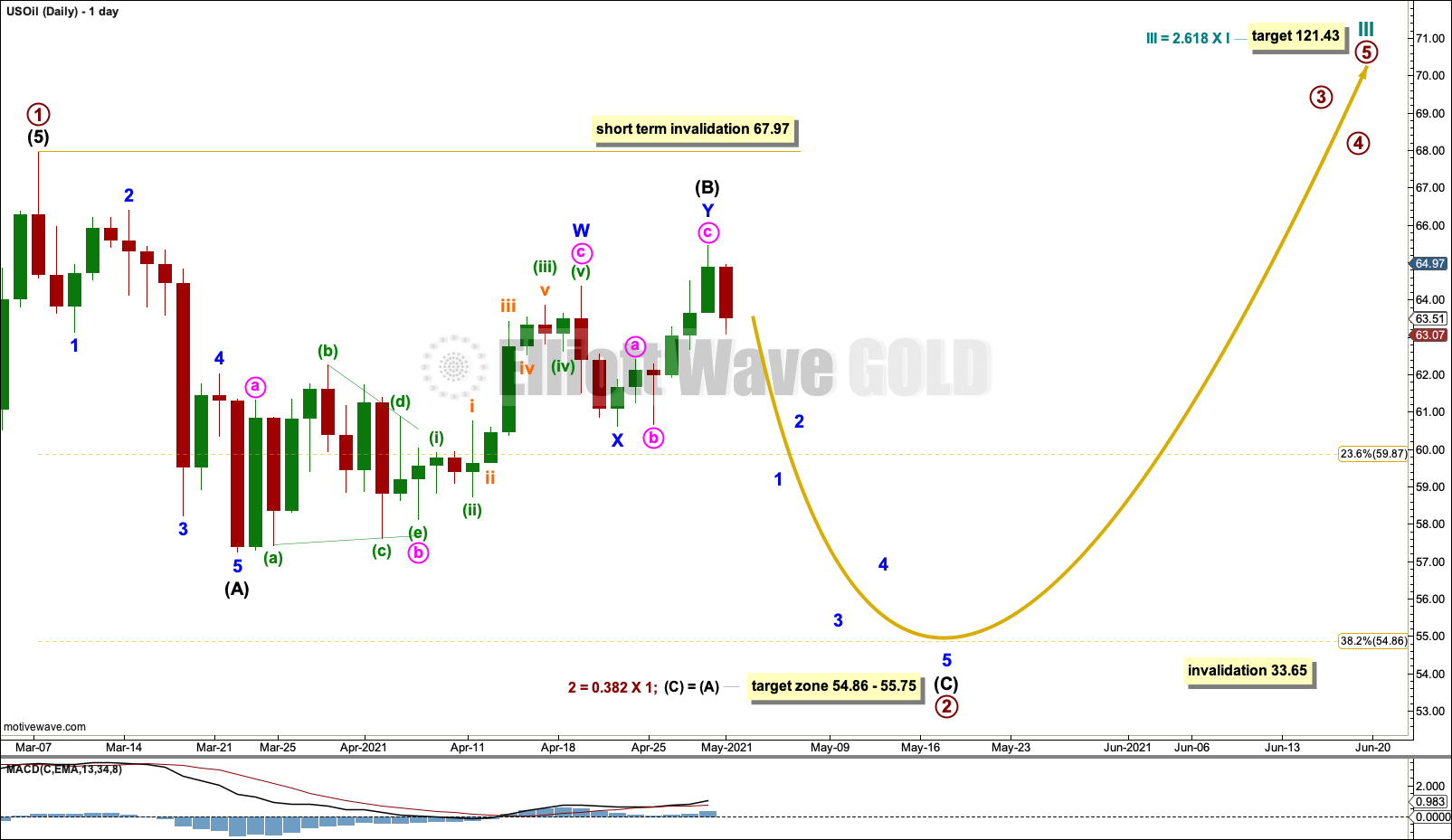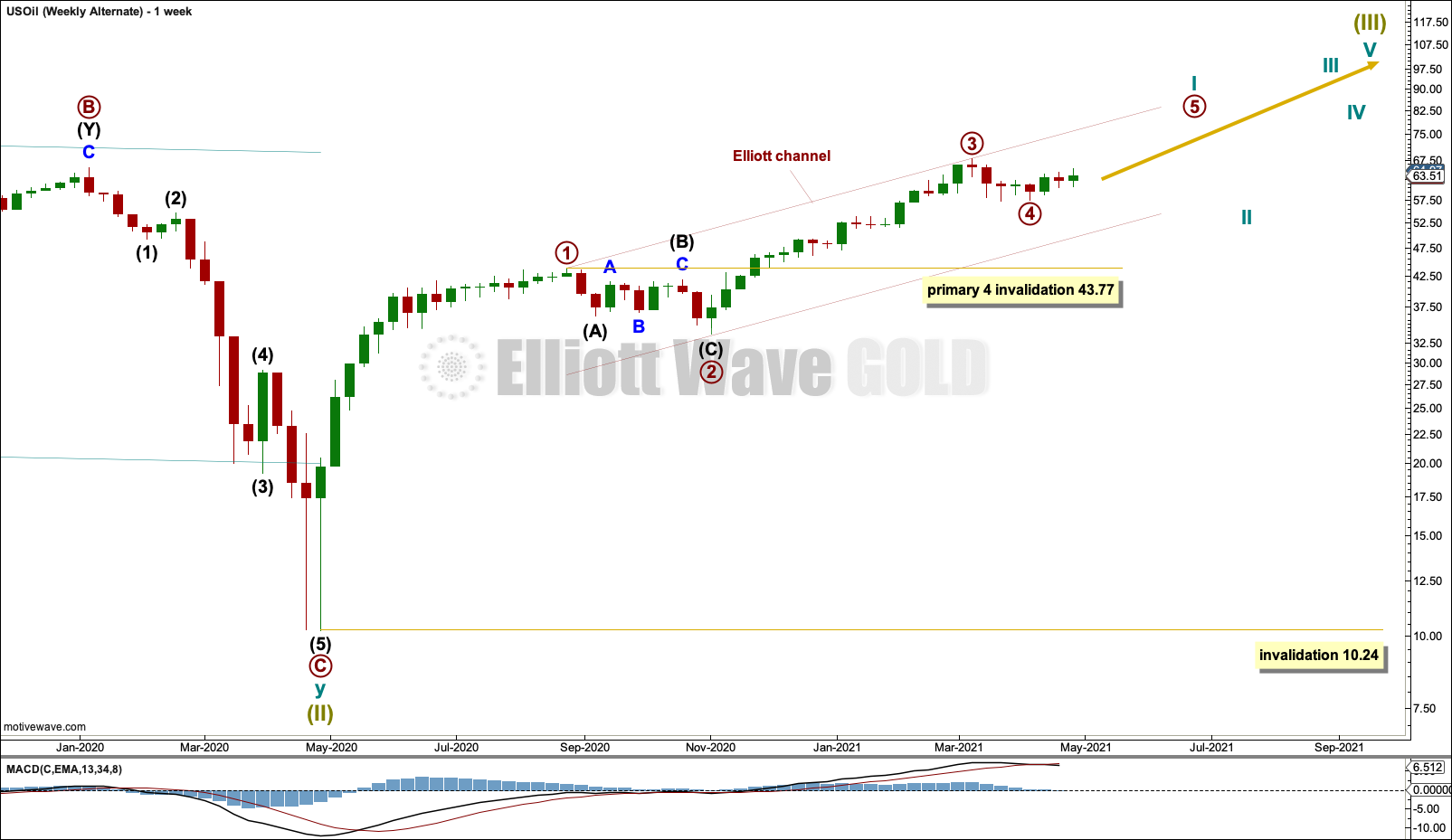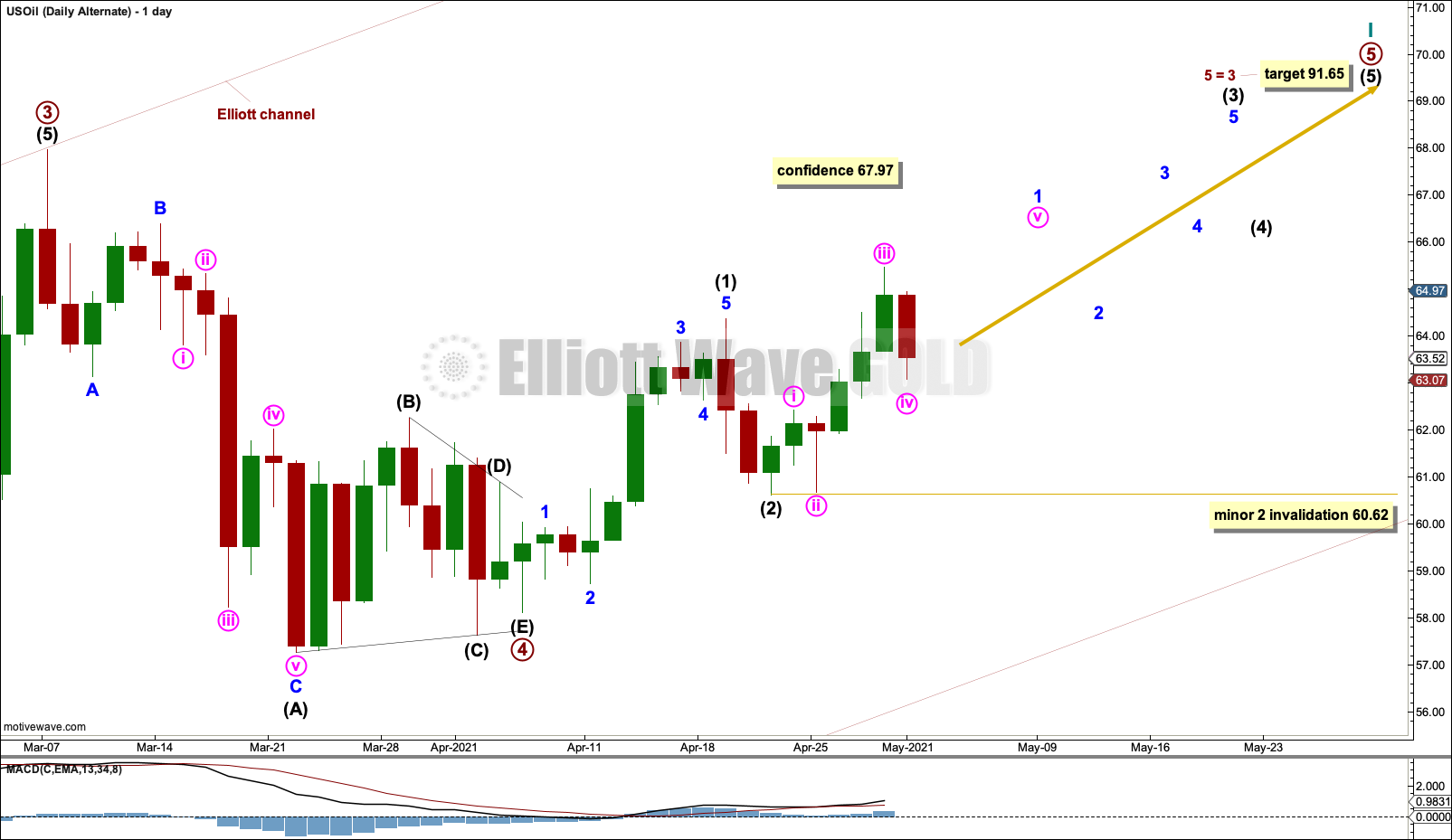US OIL: Elliott Wave and Technical Analysis | Charts – April 30, 2021
Upwards movement remains below the short-term invalidation point on the daily Elliott wave count.
Summary: Downwards movement may continue for another two to four weeks to a new target zone at 54.86 – 55.75. Thereafter, the next target is at 46.76 if price keeps falling.
Alternatively, the upwards trend may have already resumed. Confidence in this view may be had if price makes a new high above 67.97 in the short term.
The larger trend remains up.
A longer-term target for a third wave is at 87.90 or 121.43.
Oil may have found a major sustainable low in April 2020.
ELLIOTT WAVE COUNT
MONTHLY CHART
The basic Elliott wave structure is five steps forward and three steps back. This Elliott wave count expects that US Oil has completed a three steps back pattern, which began in July 2008. The Elliott wave count expects that the bear market for US Oil may now be over.
Following Super Cycle wave (II), which was a correction (three steps back), Super Cycle wave (III), which may have begun, should be five steps up when complete. Super Cycle wave (III) may last a generation and must make a new high above the end of Super Cycle wave (I) at 146.73.
A channel is drawn about Super Cycle wave (II): draw the first trend line from the start of cycle wave w to the end of cycle wave x, then place a parallel copy on the end of cycle wave w. This trend line is breached to the downside, which is a typical look for the end of a movement for a commodity.
The upper edge of the channel may provide resistance. Price is reacting down from the upper edge of this channel.
Super Cycle wave (III) may only subdivide as a five wave impulse. New trends for Oil usually start out very slowly with short first waves and deep time consuming second wave corrections. However, while this is a common tendency, it is not always seen and may not have been seen in this instance. The first reasonably sized pullback may be over already.
WEEKLY CHART
Super Cycle wave (III) must subdivide as an impulse. Cycle wave I within the impulse may be complete. Cycle wave II may also now be complete, and cycle wave III upwards may now have begun. Primary wave 2 within cycle wave III may not move beyond the start of primary wave 1 below 33.65.
DAILY CHART
Primary wave 2 would most likely subdivide as a zigzag. Intermediate wave (A) within the zigzag may be a complete impulse. Intermediate wave (B) may have continued higher this week as a double zigzag. If intermediate wave (A) is correctly labelled as a five wave impulse, then intermediate wave (B) may not move beyond its start above 67.97.
Primary wave 2 may last weeks to months.
As price approaches the first target zone at 54.86 to 55.75, and if then the structure is complete and technical analysis indicates a low may be in place, then it may end there. But if price keeps falling and / or the structure of primary wave 2 is incomplete, then the 0.618 Fibonacci ratio at 46.76 would be the next target.
Labelling within primary wave 2 may still change as it unfolds and alternate wave counts for the short-term structure may need to be considered. There are several different structures that primary wave 2 may unfold as.
Primary wave 2 may not move beyond the start of primary wave 1 below 33.65.
ALTERNATE WEEKLY CHART
This alternate wave count moves the degree of labelling within the start of the bull market down one degree. It is possible that cycle wave I is incomplete.
Primary wave 3 may have ended at the last high. Primary wave 3 is close to equal in length with primary wave 1; it is 0.79 longer than primary wave 1.
Primary wave 4 may subdivide as any corrective structure. It is possible that primary wave 4 may be a complete triangle; this is now outlined on a daily chart below. If it continues further, then primary wave 4 may not move into primary wave 1 price territory below 43.77.
ALTERNATE DAILY CHART
It is possible that primary wave 4 may be a complete regular contracting triangle. This triangle does not have a normal look; intermediate wave (A) is much longer than all other triangle sub-waves, which is abnormal and reduces the probability of this alternate wave count.
Primary wave 5 must subdivide as a five wave motive structure, most likely an impulse. Intermediate waves (1) and (2) within primary wave 5 may be complete.
Intermediate wave (3) must subdivide as an impulse. Within intermediate wave (1): Minor wave 1 may be incomplete, and minor wave 2 may not move beyond the start of minor wave 1 below 60.62.
If price makes a new high above 67.97 by any amount at any time frame, then some confidence may be had in this alternate wave count.
TECHNICAL ANALYSIS
WEEKLY CHART
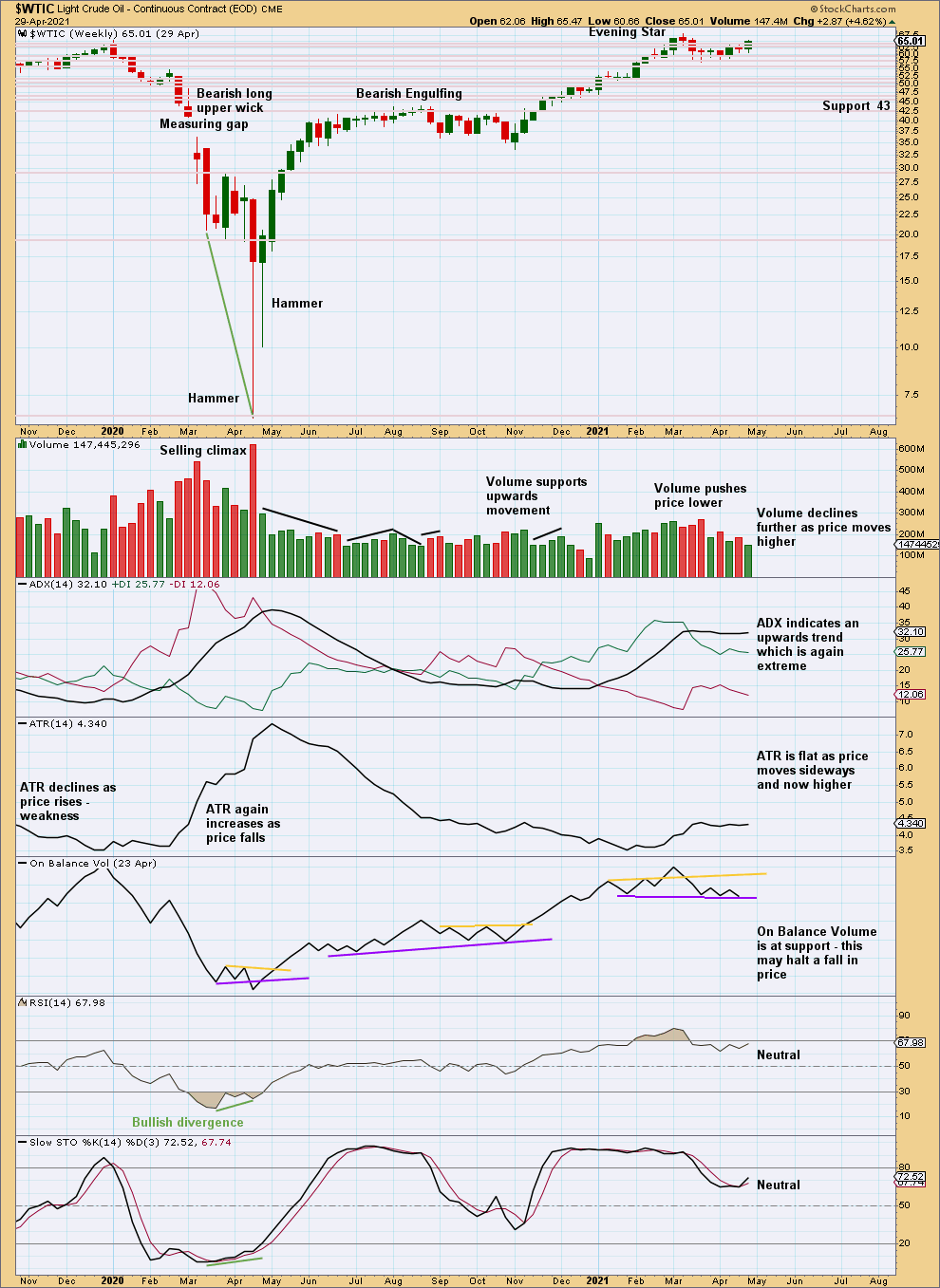
Click chart to enlarge. Chart courtesy of StockCharts.com.
A bearish candlestick pattern on the weekly chart supports the Elliott wave counts.
ADX at the high reached extreme. RSI reached extreme at the last high. Given extreme conditions a bearish candlestick pattern should be given weight. A multi-week to multi-month pullback is a reasonable expectation here.
Volume is still weak for upwards movement. On Balance Volume is at support; this may halt a fall in price. If On Balance Volume breaks below support next week, then that would be a reasonably bearish signal.
DAILY CHART
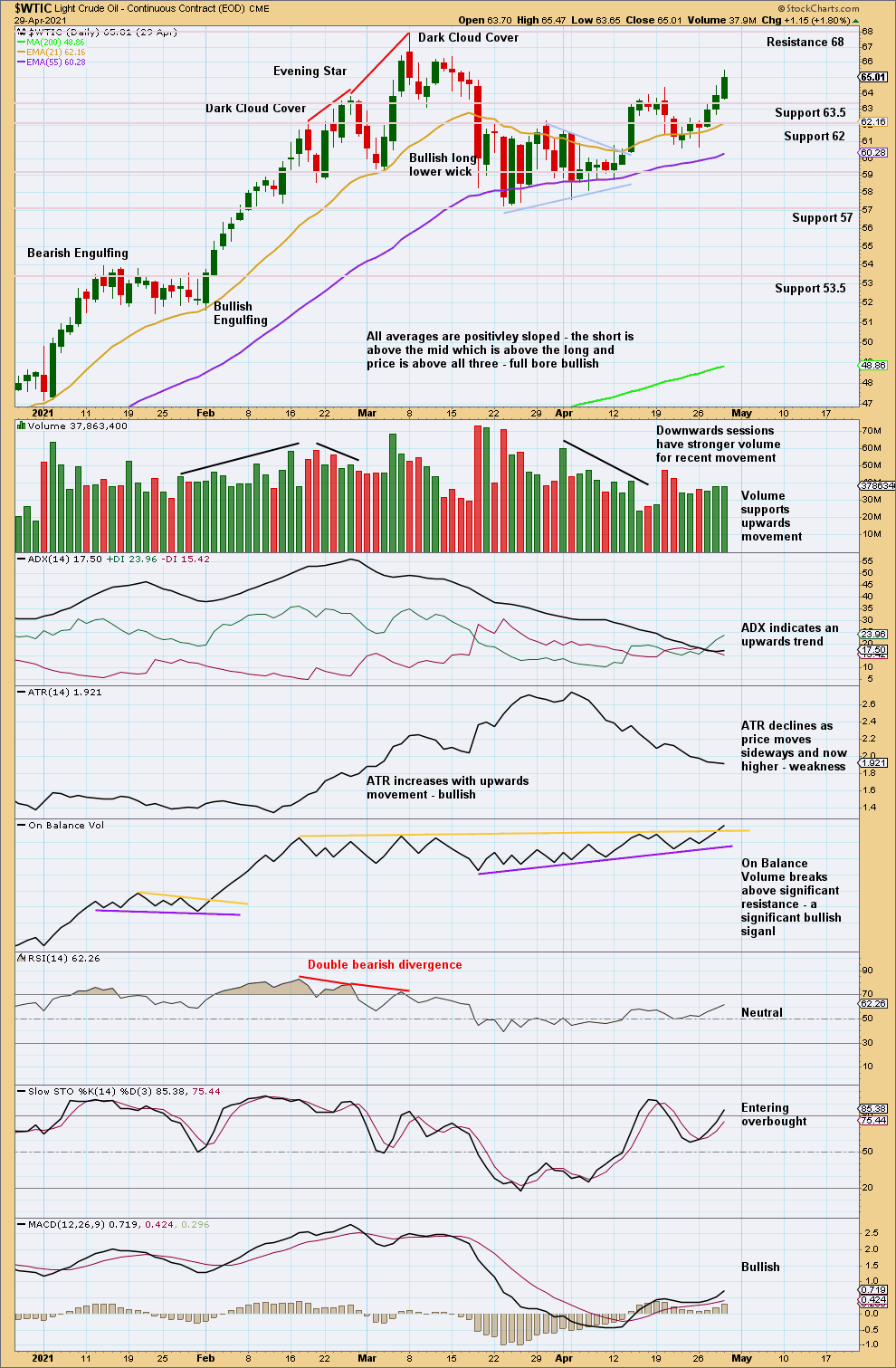
Click chart to enlarge. Chart courtesy of StockCharts.com.
This week volume , ADX and On Balance Volume are bullish, supporting the alternate Elliott wave count.
Published @ 05:50 p.m. ET.
—
Careful risk management protects your trading account(s).
Follow my two Golden Rules:
1. Always trade with stops.
2. Risk only 1-5% of equity on any one trade.
—
New updates to this analysis are in bold.

